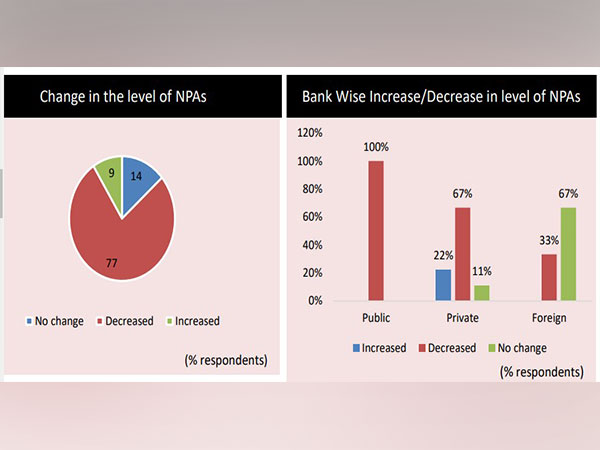A survey conducted by industry body FICCI and banking association Indian Banks’ Association (IBA) has revealed that public sector banks in India are outperforming their private sector counterparts in terms of managing non-performing assets.
The 18th round of the survey was conducted for the period of July to December 2023. The surveyed banks collectively represent about 77 per cent of the banking industry, as classified by asset size.
NPAs are loans or advances that are on the brink of default. According to the survey, a large portion (77%) of respondent banks reported a decrease in NPA levels in the last six months.
All public sector banks reported a reduction in NPA levels, while 67% of participating private sector banks cited a decrease. Additionally, none of the respondent public sector banks or foreign banks stated an increase in NPA levels over the last six months, whereas 22% of private banks did report an increase.
Sectors such as food processing, textiles, and infrastructure continue to show high levels of NPAs. Furthermore, the survey said respondent banks were more sanguine about the asset quality prospects.
Over half of the respondent banks anticipate gross NPAs to remain within the range of 3% – 3.5% over the next six months. Around 14% of respondents foresee NPA levels to fall within the range of 2.5% – 3.0%.
Textiles and garments, agriculture, and gems and jewellery are among the sectors expected to continue showing NPAs in the coming months.
The 18 rounds of survey carried out from July to December 2023 and included banks classified approximately 77% of the banking industry by asset size.
In terms of loan restructuring requests, the survey found a decline in the Indian banking space. Loan restructuring is a method used by borrowers and lenders to renegotiate loan terms and avoid default by reducing the loan EMI, extending the loan repayment tenure, or altering the previously agreed upon interest rate.
Around 44% of respondents reported a decrease in restructuring requests compared to 54% in the previous round, while 17% cited an increase. Bank-wise analysis revealed 50% of public sector banks are showing a decrease in restructuring requests, while 30% of private sector banks reported an increase in such requests.
In the case of participating private sector banks, half have cited a decrease, while 10% have stated an increase in restructuring, and all participating foreign banks have cited no change in the past six months.
A resilient domestic economy, accompanied with increased credit growth supported by government capex, a rising provision coverage ratio, effective restructuring mechanisms and a robust recovery mechanism were cited as key factors contributing to the expected improvement in asset quality over the next six months.
(Inputs from ANI)














